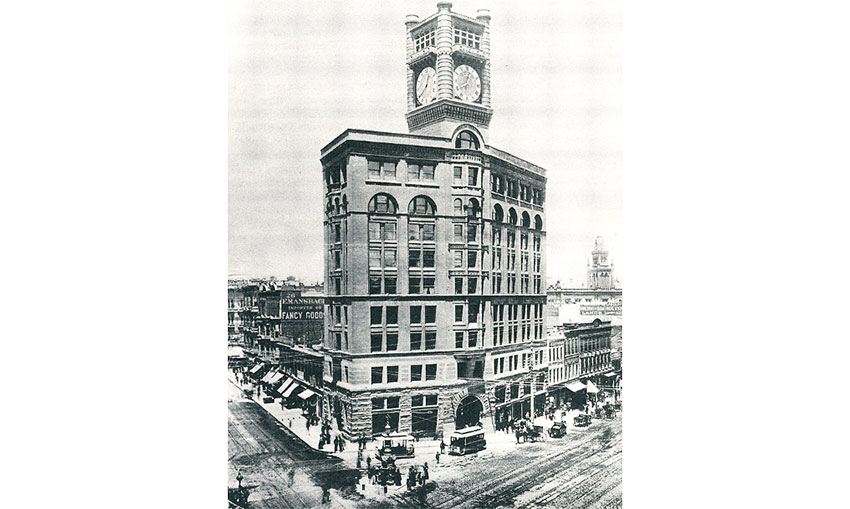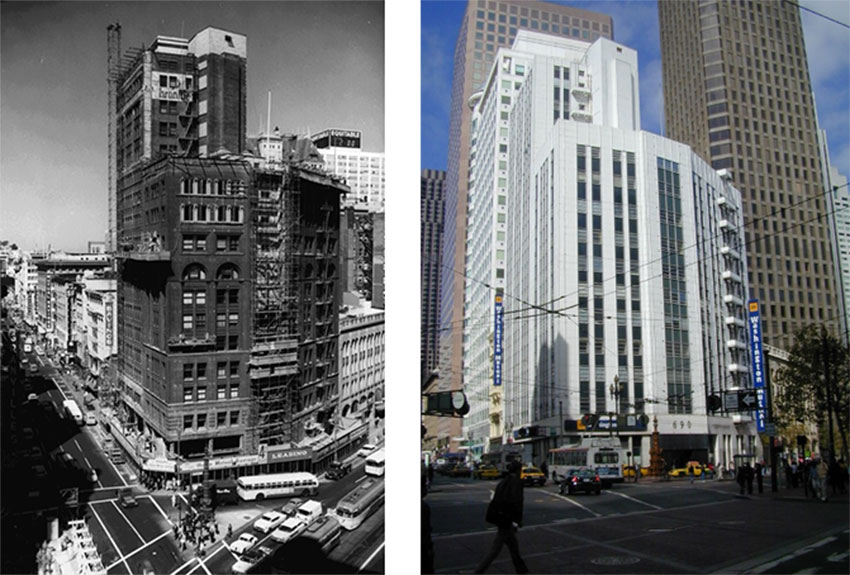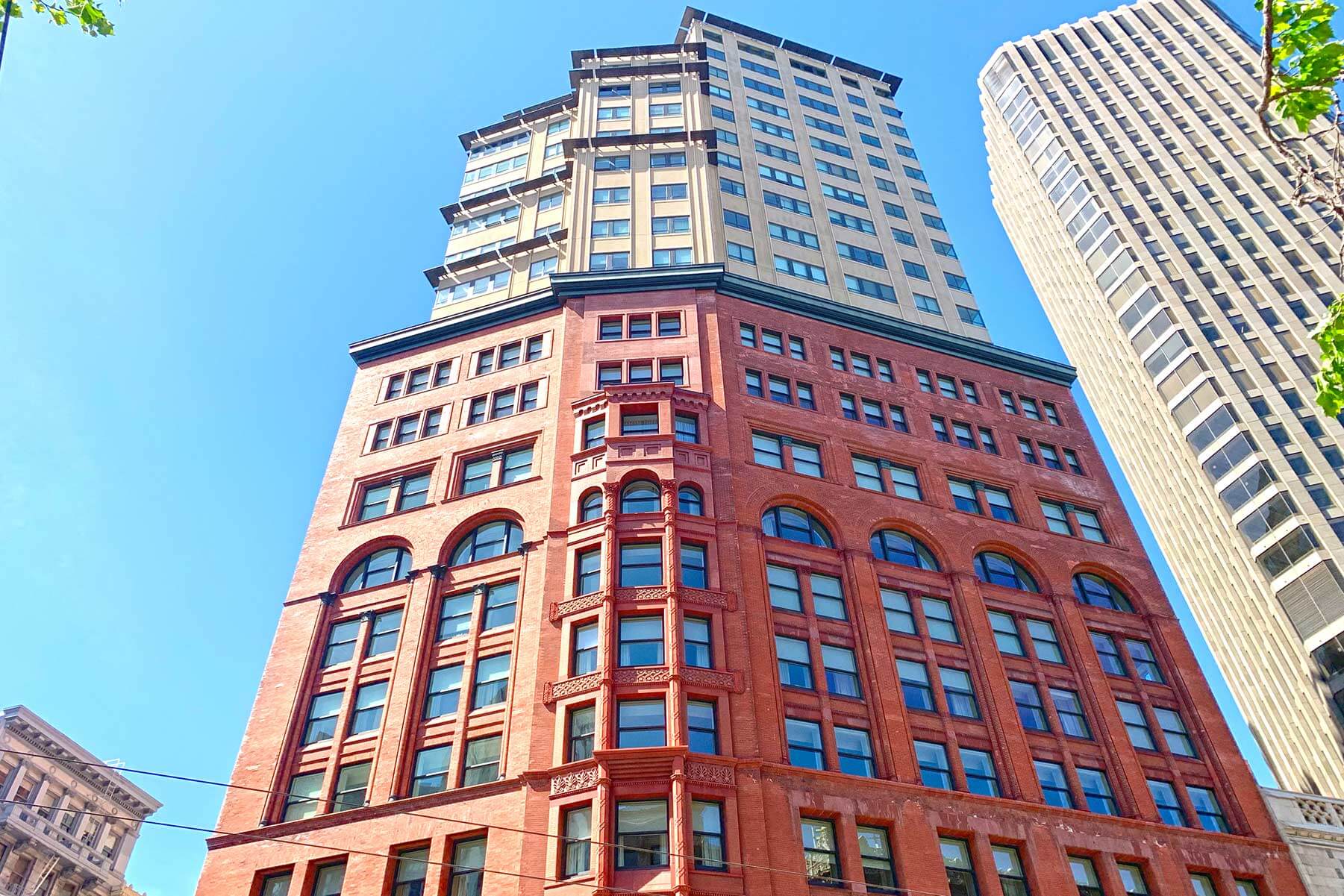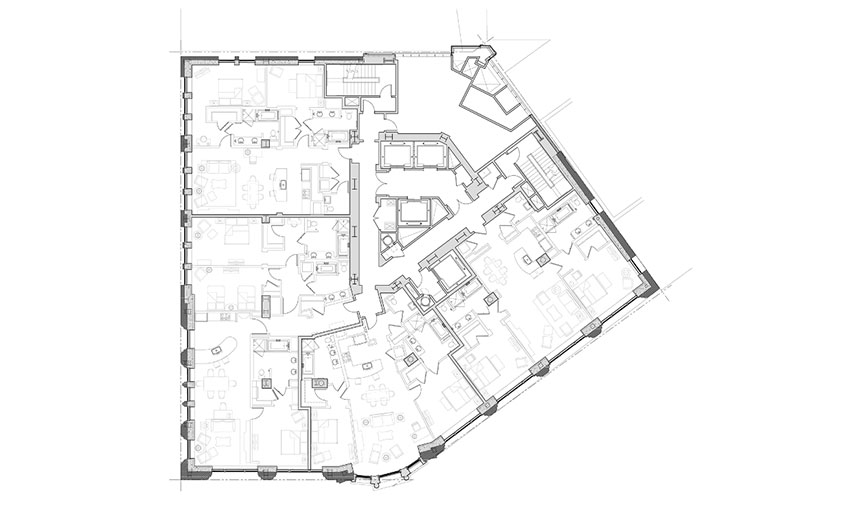Site Selection Criteria for Commercial-to-Residential Conversions
THE COMMUNITY CONTEXT
The oft-quoted adage of past AIA President Carl Elefante is relevant here: “the greenest building is the one already built” (Elefante, 2007). Repurposing underused components of the built environment is a sound way to respect the natural environment, whether or not it pencils out financially at any particular site, since the variables determining that penciling-out are relatively malleable, responding to regulatory or market conditions, compared with the long-range mandate to conserve resources and minimize damage to the Earth. Discrepancies between the value of a green community and the different sense of green that private developers prioritize have long predated the current pandemic-related conditions. What one stakeholder sees as a desirable site will appear unpromising or counterproductive from other perspectives.
With attention to the role of residential buildings in transforming neighborhoods and creating viable communities, Weisz recommends a multifactorial analysis of candidate buildings in their local contexts, asking not only whether they have readily transformable floorplates and sufficient plumbing but whether they are located close to municipal infrastructure and food sources, whether they include open space and other neighborhood amenities, and whether they respond to local needs not limited to housing units alone.
Proximity to transit, Weisz contends, is an important precondition for converting spaces and increasing a district's residential component; urban transit deserts and smaller-town locations underserved by bus or light rail are weak candidates for conversion. “The conversion issue to me,” she says, “has more to do with our codes that require parking, and all of our services that come through the streets, and what the future will be, than actually the buildings themselves, which are easy to convert.” Zoning mandating a parking-space minimum, she adds, is among the factors driving up costs of construction (reportedly adding $50,000 per parking space to development costs in Los Angeles [Manville, 2021]); “People can't afford to do structured parking, especially below grade, unless the subsidies are there for it—and again, then we're just subsidizing car use.”
Transit access, she says, “not only should be a precondition but should be the way we advocate for the conditions for making community.” WXY often seeks out settings where “communities are struggling to be communities. The concept of community actually takes a lot of work...to have someone be able to run a retail business and have reliable customers, to have that face-to-face interaction, to live somewhere and feel like you can easily get the things you need within a couple of blocks, that you're there to help your neighbors─that actually requires support.”
One adaptive-reuse project that WXY and collaborators Body-Lawson Associates have recently completed (converting from a different use), The Peninsula at Hunts Point, addresses the rebounding South Bronx's requirements for open space, healthy food sources, and live-work facilities as well as apartments. Adapted from the notorious Spofford Juvenile Detention Center (shuttered in 2011), Weisz says, the Peninsula development rearranged the relations of the carceral buildings and their surroundings and transformed the prison into a six-building, 4.75-acre, mixed-use campus. “The social impact and the fact that these buildings were closed fundamentally programmatically to the neighborhood,” she says, “really made us rethink adaptive reuse,” exchanging existing buildings with open spaces “because they were retreating from the street, and they were blocking connections to the neighborhood.”
Recalling industrial neighborhoods where a concentration of jobs have been natural residence magnets, such as the Navy Yards of Brooklyn and Philadelphia, she says, Hunts Point's fish market, produce market, small manufacturers, and new office/arts/studio/retail center (the nearby BankNote Building, another adaptive-reuse project by Beyer Blinder Belle) likewise create logical conditions for residential conversion. Combining 740 new residences with community facilities, retail, and light-industrial space including food manufacturing and media production, the Peninsula exemplifies the contextually integrated neighborhood revitalization that Weisz considers essential in adaptive reuse regardless of original program.
WXY has designed conversions of other typologies and included commercial-to-residential conversions as part of master plans and rezoning efforts, Weisz adds, though it has yet to have a commercial-to-residential project built. This is a common experience among firms that have investigated conversions. “Mainly what the pandemic has done is generated more conversation around this topic,” comments David Hart, AIA, the San Francisco-based president and CEO of Steinberg Hart, an international firm headquartered in Los Angeles. “I don't think it's actually generated a whole lot of actual movement.” Conversions of class B and C office space, in his experience, have occurred in locations where residential is scarce, often areas with 90 to 100 percent office space, where newly created housing offers a needed alternative that can “garner a per-square-foot rent that is better than the adjacent commercial only because of it being a different product type.”
In California, Hart adds, the gap between conversation and construction involves a combination of cost-benefit analyses and local conditions. “The West Coast is way behind in housing production,” he says, because “our environmental laws here in California have slowed the production over the last 20-plus years, to the point where we have what I would call a state-of-emergency housing crisis....Talk to any developer, and they will tell you that the economics of converting most office buildings to residential is cost-prohibitive.” He sees no market mechanisms generating an “office-price reset” in response to the pandemic-related demand decline; building sales that might lead to conversions are rare, with most owners preferring to hold onto underused office buildings and wait out the slump rather than sell buildings at fire-sale discounts.
“What would change the economics? Incentives from government,” Hart continues. “Because we see this empty office as a problem for an urban area, because we don't want urban blight, we'd rather have people living there, and we know we need affordable housing. So there's a place where the government could step in with subsidies, incentives, tax credits, etc.” Two pieces of state legislation signed into law in September 2022, Senate Bill 6 and Assembly Bill 2011, aim to streamline the construction process and labor arrangements for converting office buildings, big-box stores, and strip malls into affordable housing, a sign that California's government can sometimes break interest-group logjams exacerbating its housing shortage (Wiley, 2022).
The state's Project Homekey, Hart observes—an anti-homelessness grant program that grew from the Project Roomkey emergency-housing measure during the 2020 lockdown, began with hotels, and expanded to include apartments and converted commercial properties—has made some headway in expanding housing and lowering affordability barriers. National historic tax credits are also helpful. Counteracting these influences, however, is the state requirement for seismic structural upgrades, a response to the 1994 Northridge earthquake incorporated into California's 1997 building code. Because that event exposed vulnerabilities in welded steel moment frames, with about 100 Los Angeles steel buildings sustaining joint fractures, codes changed to require buildings predating 1994 to undergo a full upgrade with any change of use. (Non-ductile concrete buildings, including many built in California before the implementation of the 1976 Uniform Building Code, must also undergo structural analysis and either retrofitting to meet lateral-force restraining standards or demolition, with timelines varying by municipality.) Hart's firm recently evaluated a tower in downtown Los Angeles for conversion; although updates for Americans with Disabilities Act (ADA) compliance and energy performance were routine and were “baked in” to the cost estimates, he says, “the seismic upgrade was going to put a $40-million price tag” on the deal, delivering a fatal blow, as often happens with projects to adapt tall buildings of pre-Northridge vintage.
McLane frames the state's seismic regulations as catalysts for opportunities. “If you're a property owner with a building that's non-ductile [concrete],” he says, “you have to upgrade it at some point, and certainly whenever you make a major rehab, examining what's needed to upgrade the structure can be the prompt that actually then expands your minds as a team.” A client with an office building that needs structural work to meet an ordinance will sometimes ask architects what it needs, beginning a conversation that “opens up the property to more optimal use.”














